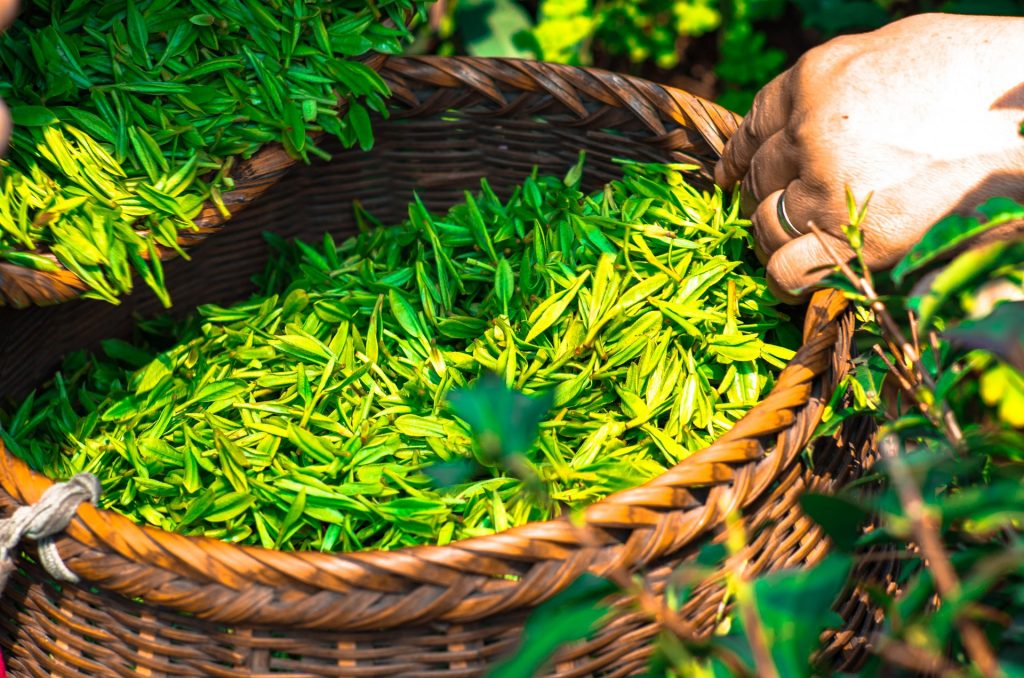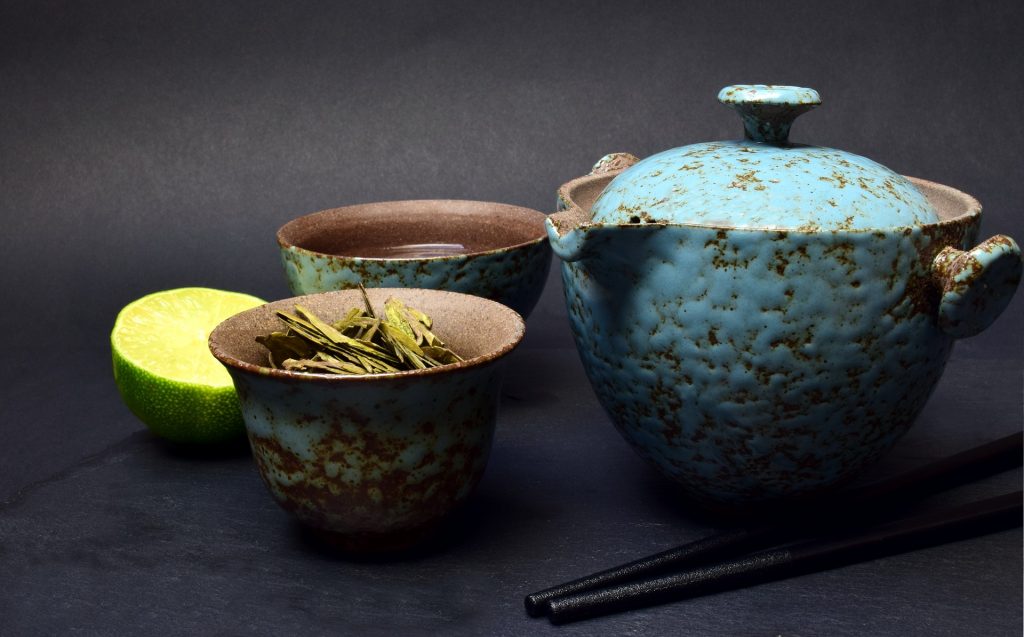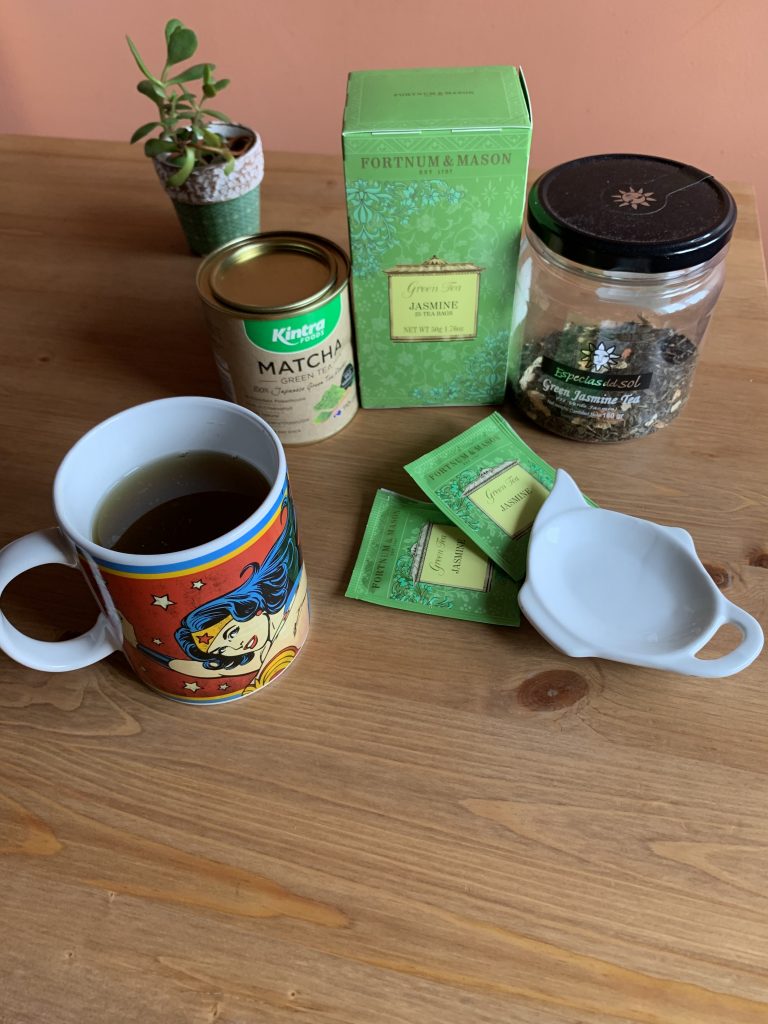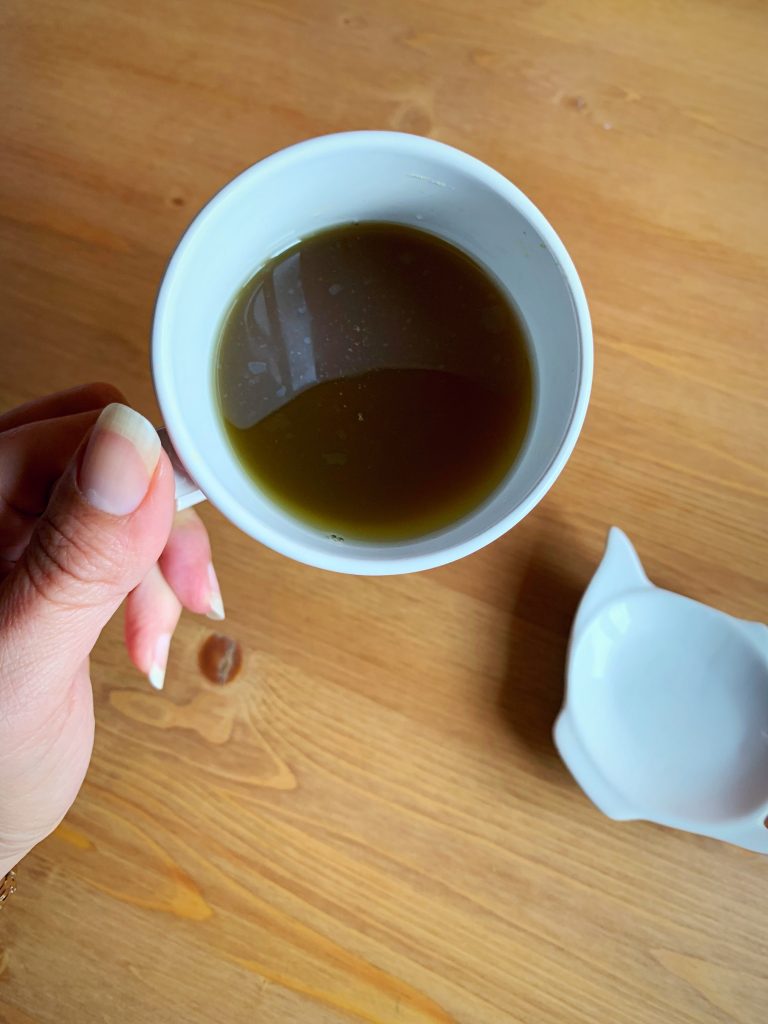Green Love
I have always loved tea, not only for its flavour, but for the romantic and aesthetic halo I’ve always associated it with. (Mad tea party anyone? I’ve thought since the first time I read it that, being Alice, I would have happily stayed with the Mad Hatter). And that was true for black tea, but then in my late twenties I began to appreciate green tea…Well, after a while there was simply no going back. I love the herbaceous hint of green tea, bitter but not quite, that leaves you refreshed and with some sweet notes in the end, blended in the tannin rich after taste. That’s just to say that I loved it before even knowing the benefits of green tea, and since I discovered all the added health bonus, a cup of green tea became my favourite drink.
Green Tea Origins
The tea plant is the camellia sinensis, and all the different tea varieties come from only two plants: Camellia sinensis var. sinensis, and Camellia sinensis var. assamica. The leaves are then treated differently to give them different levels of oxidation, obtaining white tea, black tea and all other varieties. Tea plants are native to East Asia, and probably originated in north Burma and southwestern China, but they are today cultivated across the world in all tropical climates.
According to the Buddhist belief, Bodhidarma, the monk who introduced zen Buddhism in China around 520 a.d., was the one that created the tea plant. To punish himself for felling asleep during meditation, he took away his eyelids and threw them on the ground: where the eyelids hit the ground the first tea plant was born. Its leaves remind the shape on an eyelid, and the leaves infusion represented a help for the monks that needed to stay awake in the long nights of meditation, giving them a sharp intellect as well.

The wellbeing benefits of green tea
We can surely recognise now the truth behind this legend as we know that the caffeine contained in green tea is a helpful source of mind lucidity and clarity, giving the body help in a more subtle way than coffee does. There are many wellbeing benefits associated with drinking green tea, here is a list of the most relevant ones.
Loaded with antioxidants
Green tea contains polyphenols like easily absorbed flavonoids and catechins which are powerful antioxidants, helping fight free radicals and contrast the ageing process and its related diseases. It protects from various types of cancer, precisely for its antioxidants intake, including breast cancer and prostate cancer, and according to a Chinese study green tea drinkers are less prone to develop stomach cancer.
It does something for your mouth too: thanks to the catechins it prevents cavities stopping the bacterial activity that causes plaque.
(Click here if you want an overview of the power of antioxidants)

Improves focus and brain functions
The key active ingredient responsible for this is caffeine, a well-known stimulant. As anticipated above, tea contains a smaller quantity of caffeine compared to coffee, and this makes it more tolerable and has a gentler action.
Caffeine has the merit to improve various brain functions, granting us improved mood, more vigilance, better reaction time and memory. This is reinforced by the presence of a precious amino acid, L-theanine, has anti-anxiety effects and it increases dopamine (the reward hormone) levels and improves the production of alpha waves in the brain.
Increases fat burning and helps physical performance
Widely used in weight control supplements, green tea is known for its fats burning action, and for its metabolism boost power in the short term. Not all studies are conclusive on this, so there might be a component of personal reaction to the plant (but isn’t there always?) that affect how much it works for each individual.
Protects the brain from neurodegenerative diseases
According to several studies, the catechin compounds contained in green tea are responsible for a protective effect on neurones, potentially reducing the incidence of diseases like Parkinson’s or Alzheimer’s, the 2 most common neurodegenerative diseases.

Green Tea Varieties
There are many green tea varieties, I’m going to list the most popular and my favourite one, just to give you an overview.
Sencha
Is the most popular of the Japanese teas, and the new leaves are harvested early in the season, and are steamed and rolled soon after, providing this amazing green tea. The ideal colour of the sencha beverage is a greenish golden colour. Depending upon the temperature of the water in which it is decocted, the flavour will be different, adding to the appeal of sencha. With relatively more temperate water, it is relatively mellow; with hot water, it is more astringent
Bancha
Is the same tea as Sencha, but Bancha tea is made with later flushes and firmer leaves, harvested at the end of the season, so it has a slightly lower caffein content. Is a very popular Japanese tea as well.
Kukicha
Obtained from the stems, it has a very mild flavour and a reduced caffeine intake, due to its composition. Quite popular with children and older people for its gentler taste and lower caffeine.

My Favourites
Gunpowder
is a Chinese tea, and it takes its name because of the shape it has. It is rolled in a shape that reminds of grains of gunpowder, this fragrant tea is obtained through the withering, steaming, rolling and drying of the leaves. The rolling was traditionally executed by hand, but today only the highest-grade gunpowder is rolled by hand, the rest is machine produced. The smaller the grain the more valuable the tea.
Jasmine green
the sweet and intense jasmine scent is the perfect match with the herbal flavour of green tea, is without any doubt my favourite one, and one of the easiest to find.
Matcha
Is a particular type of tea obtained by the pulverisation of Sencha leaves, that are then mixed in hot water, not simply infused, hence is the only tea in which the full leaf is consumed. It constitutes the soul of the Japan’s traditional tea ceremony and is also used to prepare traditional Japanese confections and savoury dishes.
Curious about other Japanese tea varieties? Have a look here.
The ideal green tea consumption is between 2 to 5 cups per day, in order to ensure yourself all the benefits of green tea. Just consider that it can interfere with the iron assimilation, so if you have any iron deficiency, drink it 2 hours away from lunch or dinner!
So what do you think, do you fancy a cuppa?
Let me know in the comments!